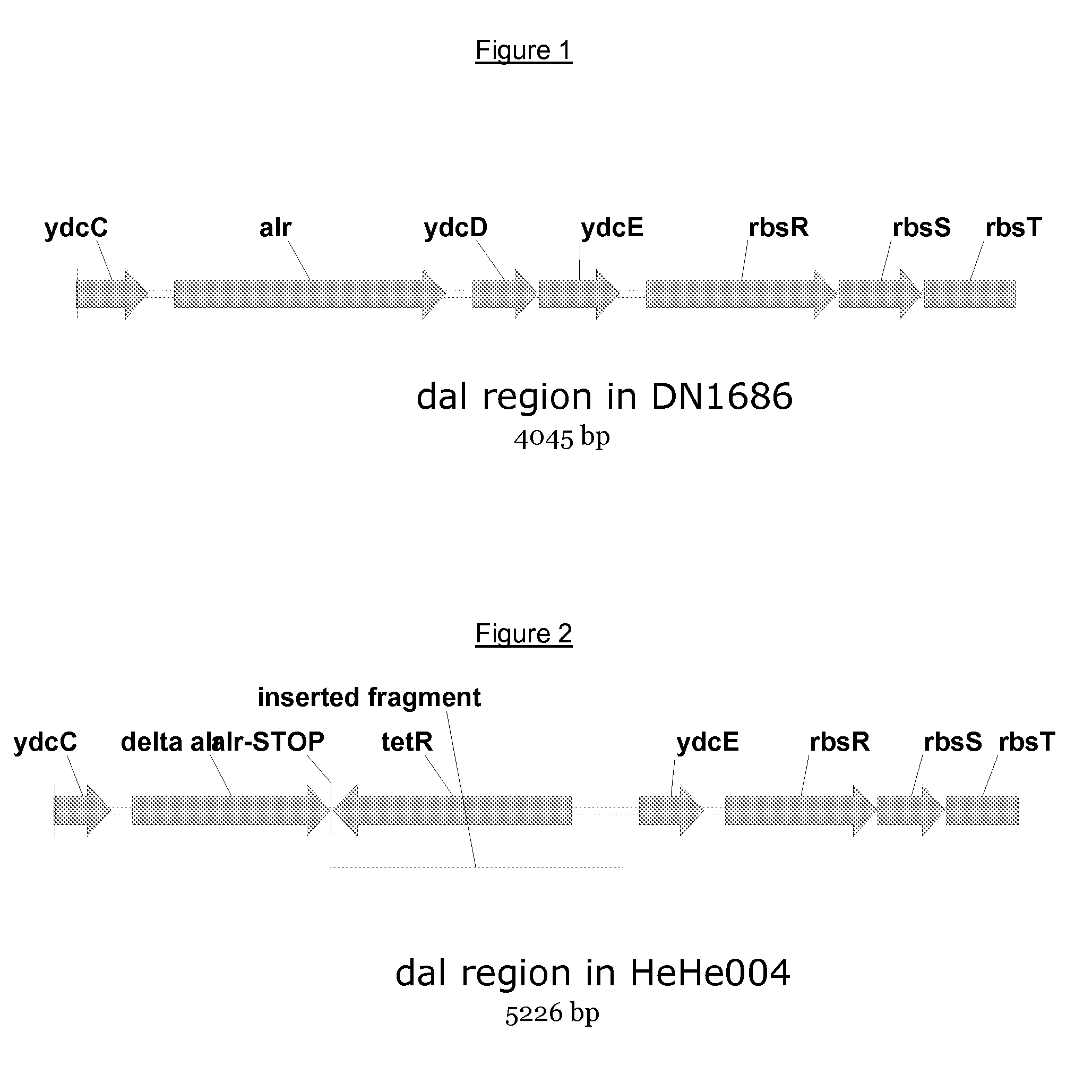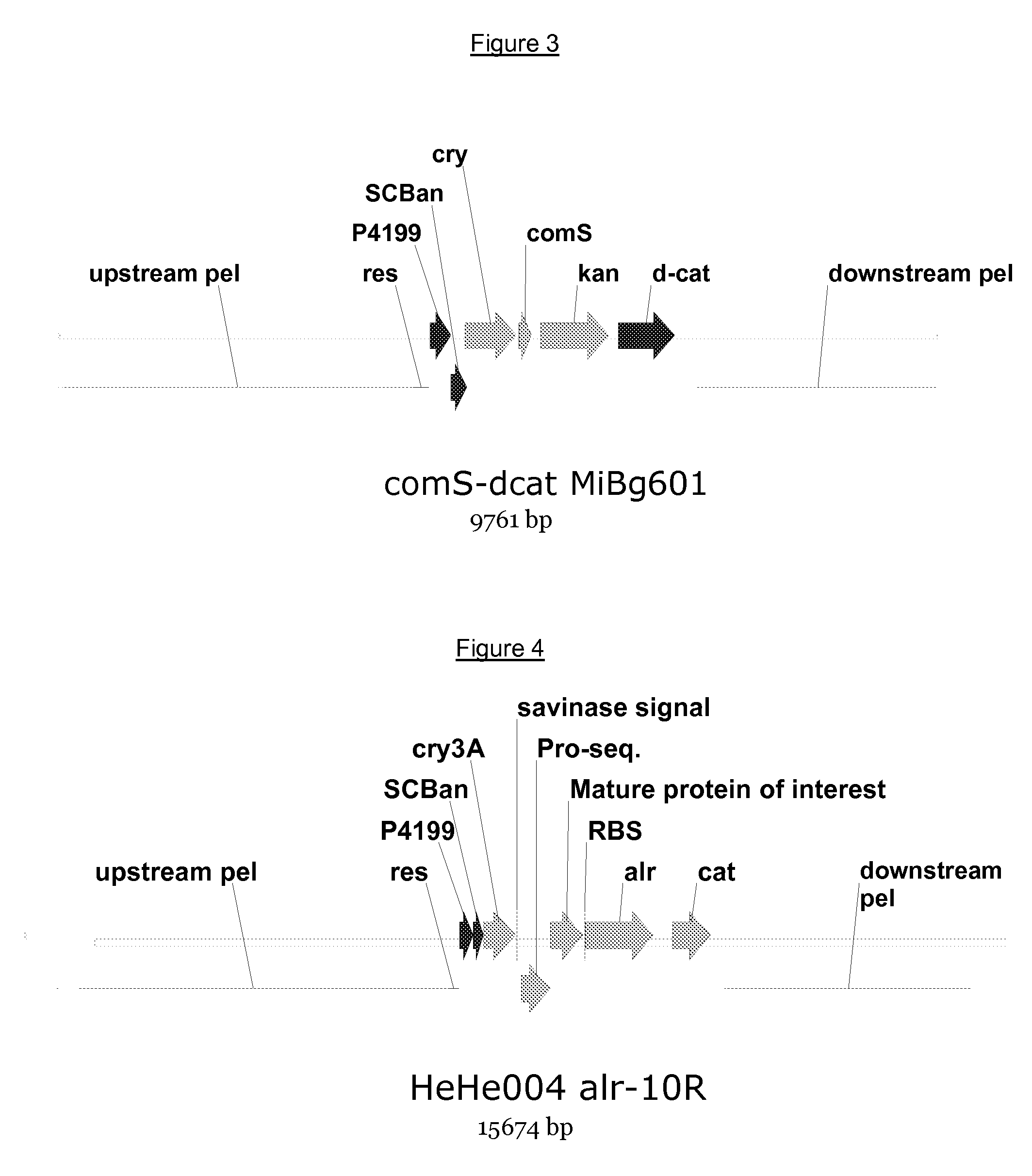Microfluidic Device Screening Method
- Summary
- Abstract
- Description
- Claims
- Application Information
AI Technical Summary
Benefits of technology
Problems solved by technology
Method used
Image
Examples
example 1
Truncation of Air in Bacillus subtilis
[0097]For the construction, we introduced a gene encoding antibiotic resistance for tetracycline into the alr-locus of Bacillus subtilis DN1686 by homologous recombination, resulting in a d-alanine racemase deficient strain. Thereby, 94 by of the alr-gene has been replaced. The alr-locus of Bacillus subtilis DN1686 is shown in FIG. 1.
[0098]A PCR product featuring the deletion construct shown in FIG. 2 was transformed into Bacillus subtilis MiBg-601 (a DN1686 derivate) resulting in tet-resistant transformants, which were selected on LB agar plates containing 10 microgram / ml tetracycline and 50 microgram / ml d-alanine. The transformants were not able to grow on LBagar-plates without d-alanine. One resulting cell was selected and denoted HeHe004.
example 2
Introduction of an Expression Cassette and comS
[0099]A cassette for heterologous polypeptide expression was introduced into the pel-locus of Bacillus subtilis HeHe004 by double homologous recombination. The cassette comprises the comS gene driven by the strong CryIIIa-promoter, which provides highly competent cells, a kanamycin-resistance selectable marker, the C-terminal part of the chloramphenicol-resistance gene as well as up- and down-stream pel-regions suitable for homologous recombination. A schematic overview of the resulting genome is shown in FIG. 3.
Example 3
Transformation of a Gene of Interest
[0100]The highly competent and kanamycine resistant cells of the previous example were transformed with a polynucleotide construct engineered to replace the comS kanamycin cassette with an intact a / r-gene and a complete chloramphenicol-gene. A schematic overview of the construct is shown in FIG. 4. The alr-gene is expressed co-transcriptionally together with the gene of interest, whic...
example 3
Complementation of d-Alanine Racemase Deficiency
[0101]After the transformation in example 3 we obtained 6*104 primary transformants. The total number of transformed cells was 3*108, which translates to a ratio of 1 transformed cell for every 5,000 untransformed cells.
[0102]After incubation of the transformation mixture for about 6 hours in a medium without d-alanine, the ratio of transformed vs. untransformed cells had increased to as much as 1:2. At the same time, each transformed cell had undergone a few replications, thus increasing the redundancy of the library.
[0103]A ratio of transformed vs. untransformed cells of 1:2 can easily be handled in a nanodroplet screening method, so d-alanine deficiency complementation is a highly suitable selection principle for nanodroplet screening.
PUM
 Login to View More
Login to View More Abstract
Description
Claims
Application Information
 Login to View More
Login to View More - R&D
- Intellectual Property
- Life Sciences
- Materials
- Tech Scout
- Unparalleled Data Quality
- Higher Quality Content
- 60% Fewer Hallucinations
Browse by: Latest US Patents, China's latest patents, Technical Efficacy Thesaurus, Application Domain, Technology Topic, Popular Technical Reports.
© 2025 PatSnap. All rights reserved.Legal|Privacy policy|Modern Slavery Act Transparency Statement|Sitemap|About US| Contact US: help@patsnap.com



